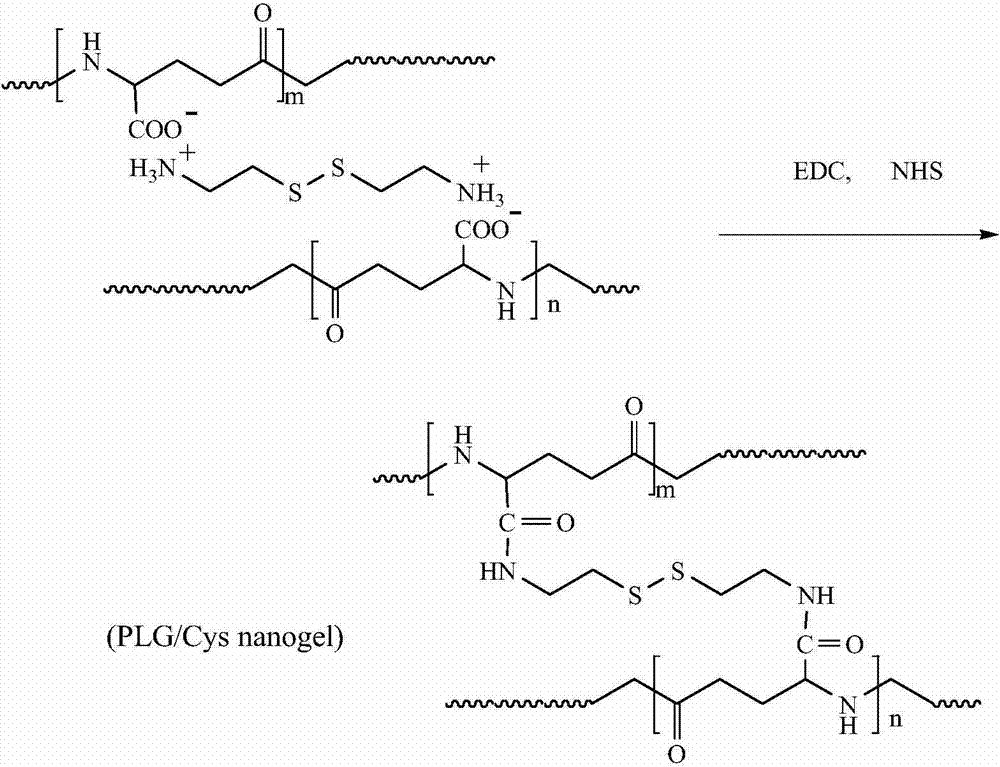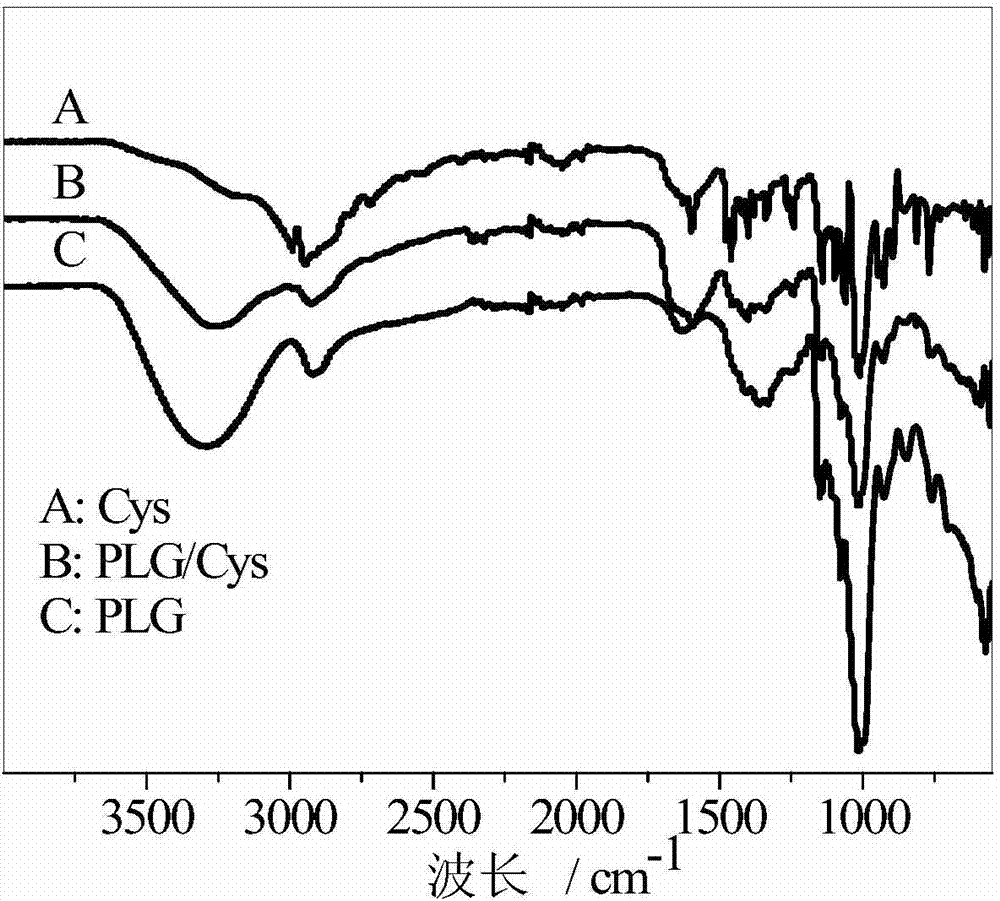PH/reduction-sensitive nano microgel based on polyglutamic acid and cystamine
A technology of polyglutamic acid and sodium polyglutamate, which is applied in the directions of organic active ingredients, medical preparations with non-active ingredients, and medical preparations containing active ingredients, can solve problems such as a large number of organic solvents and increase the number of drugs Concentration, safety-enhancing effect
- Summary
- Abstract
- Description
- Claims
- Application Information
AI Technical Summary
Problems solved by technology
Method used
Image
Examples
Embodiment 1
[0024] For the purification of polyglutamic acid, 10 g of polyglutamic acid with a weight average molecular weight of 320,000 was weighed and dissolved in 1000 mL of 0.5M NaOH solution, and stirred evenly. Slowly drop the polyglutamic acid solution dissolved in sodium hydroxide into the 1.0M HCl solution under magnetic stirring, continue to stir for 2 hours after the dropwise addition, filter out the precipitate, wash with ultrapure water, repeat the filtration and washing of the precipitate until the filtrate It is neutral, and finally the precipitate is dried in a vacuum drying oven to constant weight, and the obtained polyglutamic acid is ground into powder and placed in a desiccator for use.
Embodiment 2
[0026] Preparation of pH- and reduction-sensitive nanogels. The purified polyglutamic acid is dissolved in 0.83wt% sodium carbonate solution, and the preparation weight concentration is 0.01wt% to 0.25wt% sodium polyglutamate aqueous solution, according to polyglutamate sodium and cystamine hydrochloride The molar ratio of carboxyl group to amino group is 3:2 to 1:4. Add cystamine hydrochloride to the solution, stir at room temperature for 24 hours, put the solution into a dialysis bag with a molecular weight cut-off of 3500, and dialyze in deionized water for 72 hours to remove inorganic ions. When the solution gradually turned blue, the Tyndall phenomenon appeared in the test, and the nanometer was used to test it, and it was judged that a model of nano-microgel was formed;
[0027] The solution in the dialysis bag is transferred to the reaction bottle, and 1-(3-dimethylaminopropyl)-3-ethylcarbodiimide hydrochloride (EDC HCl) and N-hydroxysuccinimide (NHS), stirred and reac...
Embodiment 3
[0029] Preparation of drug-loaded nano-microgel: dissolve the dry-state nano-microgel in distilled water to form a solution with a concentration of 0.05 to 0.2w%, adjust the pH value of the solution to 7.4 with 0.5M sodium bicarbonate, and Add doxorubicin hydrochloride to 0.8 times the weight of the nano-microgel, stir magnetically for 24 hours, transfer the solution to a dialysis bag (molecular weight cut-off of 3500) and dialyze in distilled water, change fresh distilled water every four hours, and monitor the concentration of the dialysate with a conductivity meter. Sodium chloride salt concentration, until the sodium chloride salt concentration in the dialysate is less than 0.05w%.
PUM
| Property | Measurement | Unit |
|---|---|---|
| particle diameter | aaaaa | aaaaa |
| diameter | aaaaa | aaaaa |
| particle diameter | aaaaa | aaaaa |
Abstract
Description
Claims
Application Information
 Login to View More
Login to View More - R&D
- Intellectual Property
- Life Sciences
- Materials
- Tech Scout
- Unparalleled Data Quality
- Higher Quality Content
- 60% Fewer Hallucinations
Browse by: Latest US Patents, China's latest patents, Technical Efficacy Thesaurus, Application Domain, Technology Topic, Popular Technical Reports.
© 2025 PatSnap. All rights reserved.Legal|Privacy policy|Modern Slavery Act Transparency Statement|Sitemap|About US| Contact US: help@patsnap.com



